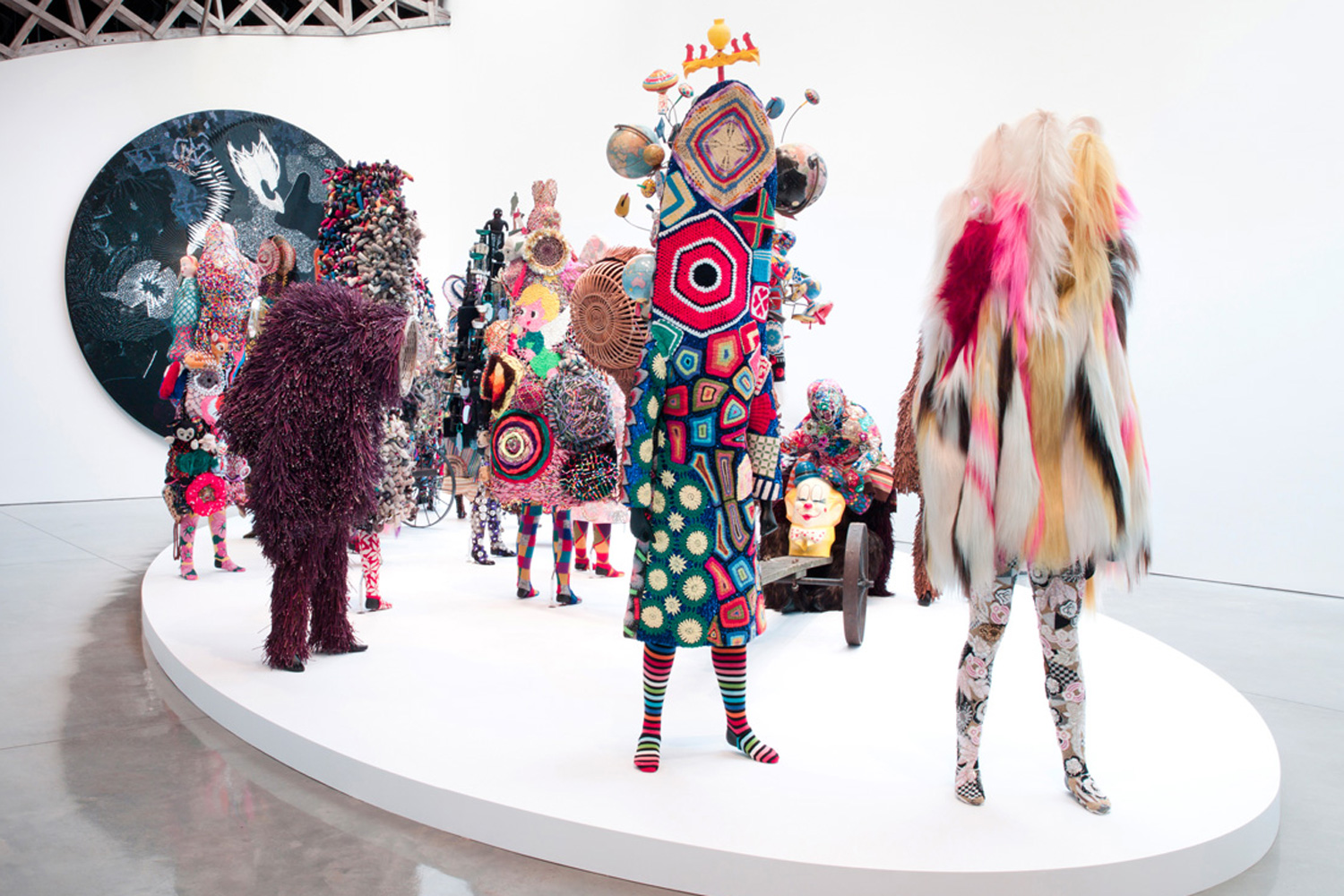My poem, “Meet Me at the Center of the Earth” is up at EOAGH Journal of the Arts, a great online site that concerns itself with reading “as a process, the productive chaos of investigative poetic work.” There are some cool poems by Steve Benson, and Christine Kanownik.
As an experiment, I am embedding a pdf of my poem here because it has a rather sinuous shape and odd line breaks.
http://invisibleadventure.com/wp-content/uploads/2013/04/MeetMe4-10-13.pdf
Whew, it worked. And because I love them so much, here’s a photo of some of Nick Cave’s Soundsuits, which inspired my poem. It would be amazing to see them in motion, no?

Tag Archives: Nick Cave
Fantastic Ekphrasis!
Wow, I see it has been a while since I posted! Well, I can say I haven’t been idle since I was writing my thesis, As a Wave Is a Force, which was a big endeavor, and for which I received my MFA from the University of San Francisco! I was thrilled with my letters of acceptance from Brian Teare, my fantastic thesis advisor, and Aaron Shurin, the program director/Big Kahuna at USF. I will definitely treasure their reflections on my work forever. There are all kinds of ways to become a poet, but the USF program was totally the right way to go for me. A huge thanks to all my teachers, fellow writers, friends and family who were part of this incredible journey! I learned things far beyond anything I had imagined–and I had the best time doing it!
Now I’m in post-MFA mode and happy to have a couple of things out in the world. A set of four poems titled “Life in Necropolis,” in Issue 12 of Switchback and a book review in the March 2011 issue of Folly Magazine. Click on the links in the sidebar to check them out.
Switchback is the online journal at USF and Folly Magazine is a beautiful online journal of art, aesthetics and poetry. Enjoy the gorgeous paintings in Folly by Michael Raedecker, a Dutch painter who works in acrylic and thread.
Which brings me to a subject near and dear to my poetry: Ekphrasis, poems based on other mediums and artforms. One of the most famous examples of an ekphrastic poem is Rilke’s “Archaic Torso of Apollo”:
Archaic Torso of Apollo
by Rainer Maria Rilke
translated by Stephen Mitchell
We cannot know his legendary head
with eyes like ripening fruit. And yet his torso
is still suffused with brilliance from inside,
like a lamp, in which his gaze, now turned to low,
gleams in all its power. Otherwise
the curved breast could not dazzle you so, nor could
a smile run through the placid hips and thighs
to that dark center where procreation flared.
Otherwise this stone would seem defaced
beneath the translucent cascade of the shoulders
and would not glisten like a wild beast’s fur:
would not, from all the borders of itself,
burst like a star: for here there is no place
that does not see you. You must change your life.
Like many readers, I love the way this poem moves, how it turns the light of perception back on us at the end, when it had been placed so intently on the statue of Apollo. And yet, as much as I love the description of the artwork itself, I often find myself writing ekphrastic poetry that does not necessarily include description as part of its content. My poem, “Life in Necropolis,” for instance, was inspired by a modern version of a Chinese terracotta warrior by the artist, Wanxin Zhang, but you don’t really see the statue itself in the poem. The first section of the poem is about the farmers who found the actual terracotta warriors in their field in Xi’an as they were digging for water. Thinking about how the farmers were displaced from their home after the discovery led me to remember the people (including my grandparents) who immigrated to America, which led me to ponder the assimilation of my generation and then the dissemination of information and culture via that assimilation. The journey of the immigrant became the journey of the poems embodied in the writing of the poems.
I also included ekphrastic poems in As a Wave Is a Force, inspired by the work of two artists, Nick Cave and William Kentridge, who had exhibitions in San Francisco during the summer of 2009. I thought of these as “translations,” rather than descriptions, but that brings up a whole different can of ekphrastic worms, so I’ll write about that in another post. . . someday.
Anyway, I am super curious about what other people think about using visual art as material for poetry! What is your take on it, and do you have any ekphrastic poems you love?
